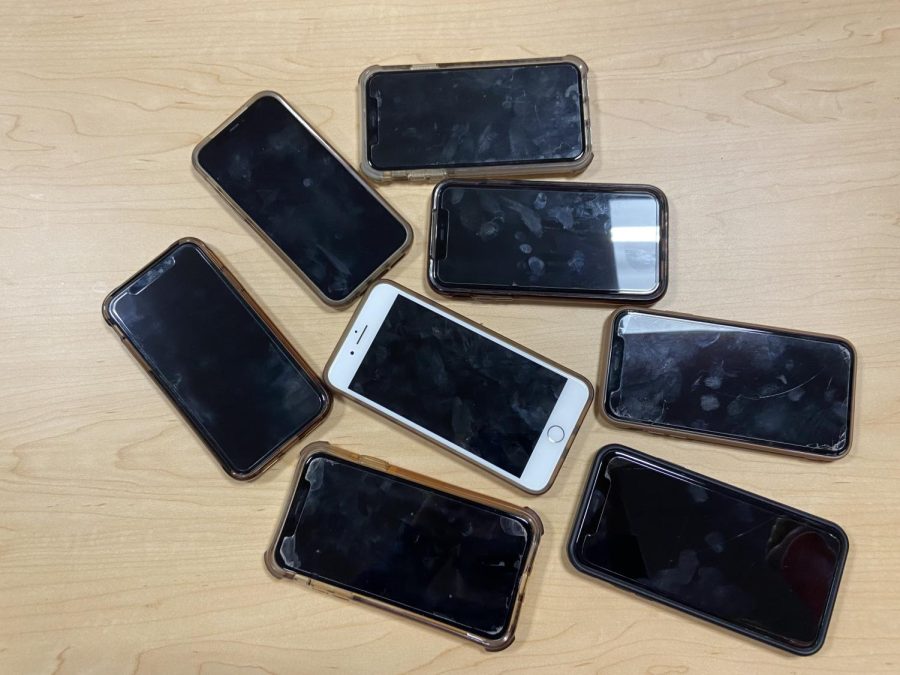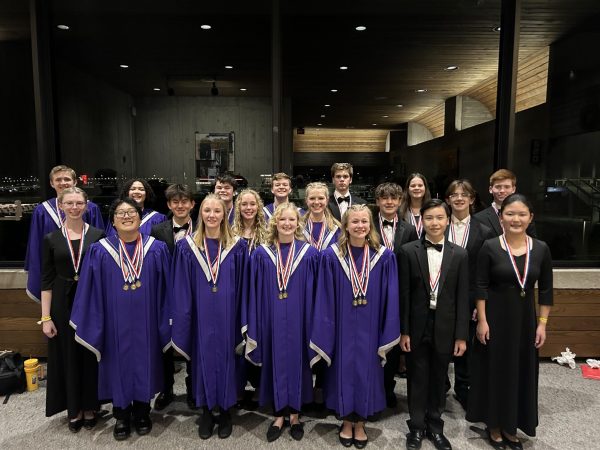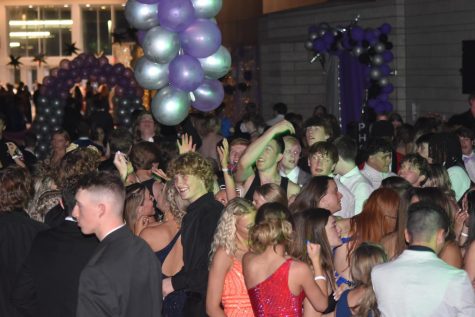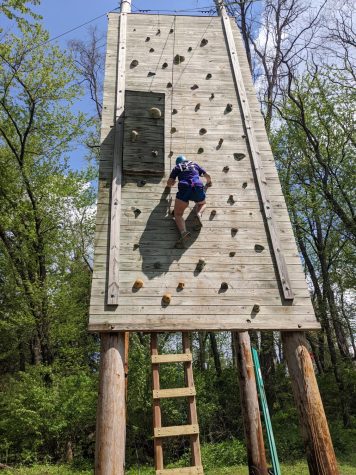Screen Time Epidemic
Without a doubt, cell phones and technology are becoming a bigger and bigger part in people’s lives everyday.
Students phones being shown during a class used for non-school related work.
Many individuals here at Liberty and around the world have one common characteristic: large amounts of screen time per week. Although some people think that screen time is beneficial in many ways, high hours of screen time per day can lead to many problems such as increased symptoms of depression, anxiety, and in certain cases, obesity. Is screen time an arising problem in today’s youth, or is it just a myth that large amounts of screen time do nothing to your body in a negative or positive way? Three Liberty students weighed in with their answer to this question.
The average amount of screen time in the United States in teens is 7 hours and 22 minutes per day, none of this screen time being related to school work.
Gracie Hennings, sophomore, has an average screen time of around 4 hours per day, 3 hours and 22 minutes below the national average for teenagers.
Many students think that screen time in school, like chromebooks, are limiting people’s ability to focus. For schools, it is difficult to regulate the amount of screen time students get because for certain assignments, chromebooks are the only things the class can use to get their work done. Also, it is clear to see that students a lot of the time are on their phone, scrolling through social media in class.
“Screen time is definitely limiting focus in school,” said Hennings. “It is easy to get distracted by a Snapchat or social media notification. Social media can seem more urgent and of more importance than the lessons being taught in class at the time.”
Social media, for some, is taking away time away from things that could be more useful, such as learning a new equation in math, or learning about a certain event in history. But chromebooks in school are adding to the amount of screen time per day, whether it is related to teaching or not.
“The dependency on technology is fueled by the use of our chromebooks in school. [The] majority of my homework [and] schoolwork is done on a chromebook and without it I can’t get much done,” said Hennings.
With technology already becoming integrated into students’ everyday lives, it is sometimes hard to get a break from it. Taking a break from screen time can seriously help with symptoms of excessive amounts of screen time like headaches.
“I try to limit my screen time by adding limits to apps and distracting myself with things not related to technology,” said Hennings.
Trey Schweitzer, sophomore, also takes breaks from his phone to try and cut down on his screen time.
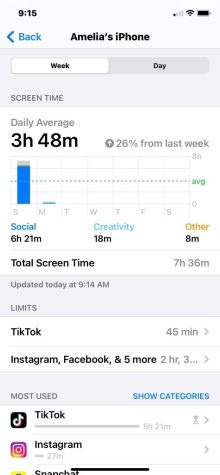
“Sometimes I take breaks from my phone to think,” said Schweitzer.
With the average screen time being so high for teenagers, it is clear to see that some are creating a dependency on technology, and some are even creating an addiction.
JJ Grimm, sophomore, thinks that people are creating a dependency on technology, but there is a reason as to why that is happening.
“It does create a dependency because that is how we all communicate,” said Grimm.
Although there are a few negatives to using technology constantly, there are a few positives that can outweigh the negatives in some cases. It can be beneficial in ways like making plans with friends or talking to a new friend from school.
“I’d say it is a great way to communicate with new people and gain more friends,” said Schweitzer. “It is also a way to communicate to people that wouldn’t regularly be able to talk in real life.”
The recommended daily screen time is only 2 hours per day for teenagers, which is severely less than the national average.
“It should not be limited to 2 hours because a lot of teachers are using technology now and 2 hours is not enough time for students to get their work done,” said Grimm.
Since technology is such a large part of culture, it is inevitable that people will create some sort of addiction to their phones. In some cases, technology severely impacts their life in a negative way.
“People lose control of how much they’re on their phones,” said Schweitzer, “Some people lose grip on reality and can’t tell the difference between something from your phone and something that’s in the real world.”

Amelia Cleary, junior, is a first year staff member. Outside of school, Amelia spends most of her time dancing at Nolte Academy. She also enjoys hiking,...



